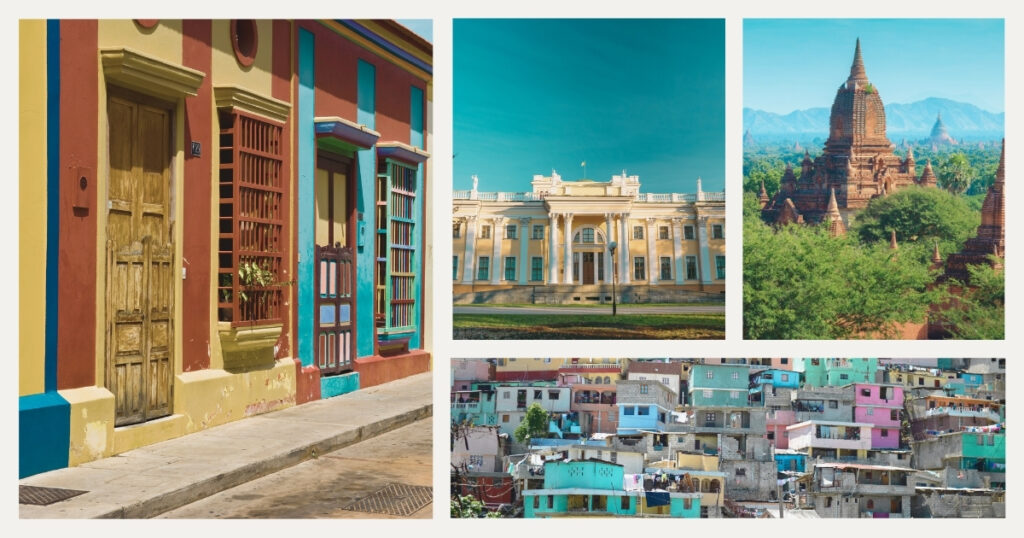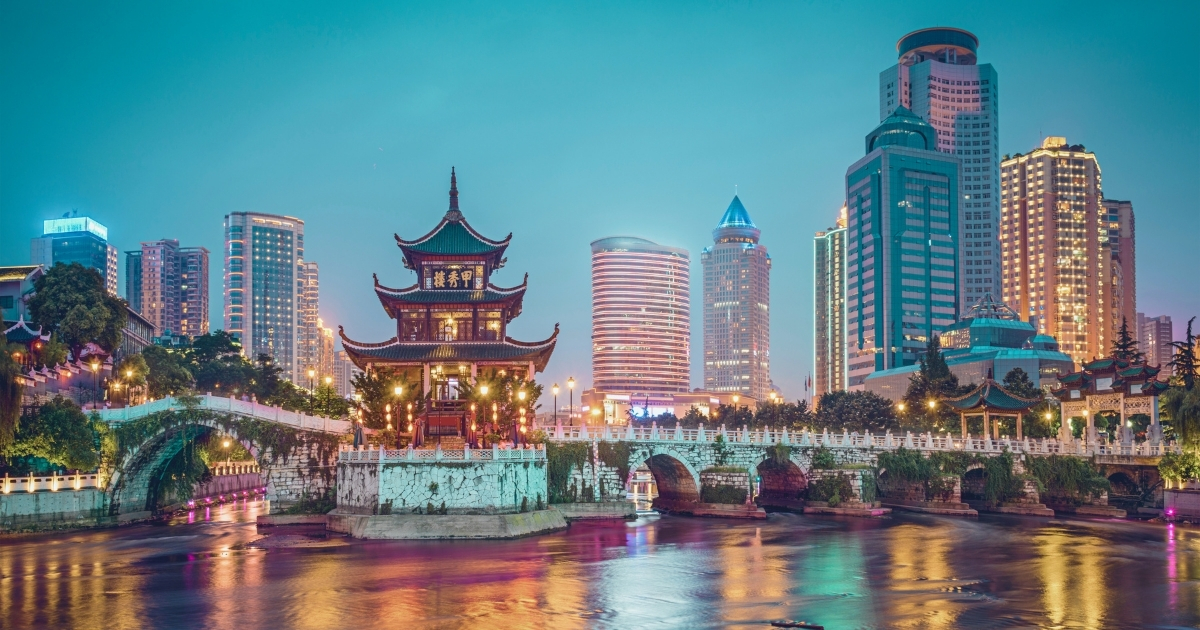For digital nomads, the world offers endless possibilities for adventure and productive remote work. However, not all destinations provide the safety, infrastructure, and quality of life that location-independent professionals need to thrive. Understanding the worst countries to live in for digital nomads can save you from significant challenges during your global journey.
In this guide, we’ll explore regions that digital nomads should approach with caution. From political instability to poor infrastructure, we’ll examine factors that create challenging environments for remote workers. While we typically focuses on guiding you toward ideal destinations, understanding what makes certain places rank among the worst countries to live in is equally valuable for your nomadic lifestyle.
Key factors that define the worst countries to live in

Before examining specific regions, let’s understand what determines which locations rank among the worst countries to live in for digital nomads.
Essential requirements for digital nomads
Remote workers have unique needs that differ from traditional tourists. When evaluating it for remote workers, several critical factors come into play:
- Internet reliability and stability
- Political security and personal safety
- Infrastructure quality and accessibility
- Healthcare access and standards
- Visa policies and administrative processes
- Cost-to-value ratio for accommodations
🌟 Pro tip: while global indices provide valuable data, always research recent developments, as conditions in the worst countries to live in can change rapidly.
Understanding data limitations
Our assessment of the least livable countries draws from multiple reputable sources, including global indices and specialized digital nomad platforms. However, limitations exist:
Rankings shift each year, personal experiences can vary greatly, and some areas within these less favorable nations may actually be quite suitable for certain nomads. Cultural preferences also play a big role in how people experience difficult destinations.
💡 Did you know? Even in countries often labeled as the most challenging places to live, there can be pockets of stability—especially in capital cities or economic hubs—that offer surprisingly good conditions for digital nomads.
Political instability and conflict zones

Political instability represents the most serious concern when identifying the worst countries to live in for digital nomads. Security considerations should always be paramount when choosing destinations.
War-affected regions
Our assessment of the least livable countries is based on a range of trusted sources, from global rankings to digital nomad platforms. Still, it’s important to recognize a few limitations:
Rankings fluctuate yearly, individual experiences differ widely, and some regions within these less appealing countries may actually suit certain nomads quite well. Personal values and cultural preferences also shape how one experiences challenging locations.
💡 Did you know? Even in places often seen as tough environments to settle in, you’ll find areas of stability—particularly in capital cities or special economic zones—that can offer surprisingly favorable conditions for remote workers.
Politically volatile nations
Even without active warfare, political volatility can create untenable conditions. Countries experiencing frequent government changes, civil unrest, or severe political repression often rank among the worst countries to live in for digital nomads seeking stability.
Notable examples include Venezuela with its economic instability, Belarus where government controls limit freedoms, Myanmar following political upheaval, and Haiti where unpredictable conditions prevail.
Digital infrastructure challenges

For digital nomads, reliable connectivity is non-negotiable, making places with poor digital infrastructure among the worst countries to live in for remote work.
Internet censorship and restrictions
Locations with severe internet censorship present particular challenges for digital professionals. Nations like North Korea, Turkmenistan, and Eritrea maintain restrictive policies that effectively place them among the worst countries to live in for the digital nomad lifestyle.
Similarly challenging are China with its access restrictions, Iran where communication apps face limitations, Russia with increasing digital isolation, and Cuba where internet remains limited and expensive.
- Comprehensive blocking of social media platforms
- Restricted access to VPN services
- Limited bandwidth allocations
- Periodic complete internet shutdowns
Connectivity issues and power stability
Even without deliberate restrictions, unreliable infrastructure creates significant barriers in many of the worst countries to live in for digital nomads. Regions with serious connectivity challenges include parts of Sub-Saharan Africa with frequent power cuts, rural South Asia with underdeveloped infrastructure, and remote Central Asian areas.
🌟 Pro tip: if your work requires visiting challenging destinations, ensure backup internet access with Holafly eSIM, which provides reliable connectivity options even in places with limited infrastructure.
Safety and security concerns

Personal safety represents a fundamental consideration when identifying the worst countries to live in for digital nomads. Security issues dramatically impact quality of life for location-independent professionals.
High crime rate nations
Places with extreme crime rates create environments where constant vigilance is required, placing them among the worst countries to live in for remote workers. Regions frequently ranking poorly due to crime include parts of Central America (particularly Honduras and El Salvador), certain South African urban centers, and Brazil’s major cities.
The risk extends beyond physical safety to digital security, particularly in the worst countries to live in where tech theft specifically targeting remote workers has increased in recent years.
Digital nomads carrying valuable equipment face heightened risks in locations where:
- Express kidnappings target foreigners
- Armed robbery rates are exceptionally high
- Police corruption limits effective protection
- Technology theft operations specifically target travelers
Health and environmental hazards
Health risks and environmental hazards can turn otherwise attractive destinations into some of the least suitable countries for long-term digital nomad stays. Key concerns include nations with high levels of air pollution, areas with limited access to clean water, regions affected by endemic diseases, and places prone to natural disasters without adequate response systems.
Legal and administrative obstacles

Bureaucratic challenges can transform even physically safe locations into some of the worst countries to live in for digital nomads seeking hassle-free experiences.
Restrictive visa policies
Countries with strict immigration policies create major obstacles for location-independent professionals. From a visa standpoint, the most restrictive nations often lack viable options for remote workers, impose frequent exit requirements, demand excessive paperwork, change policies unpredictably, and charge high fees for short stays.
These limitations often push digital nomads into legal gray zones, which is a key reason why such destinations rank poorly in terms of administrative friendliness.
Banking and financial restrictions
Countries with strict immigration rules pose serious challenges for location-independent professionals. From a visa perspective, highly restrictive destinations often offer few or no options for remote workers, require frequent border runs, involve heavy paperwork, shift regulations without warning, and impose steep fees for short-term stays.
These hurdles frequently push digital nomads into legal gray areas—one of the main reasons why these places score low when it comes to administrative ease.
Cultural and social restrictions
Freedom and openness significantly impact quality of life for digital nomads, making restrictive societies some of the worst countries to live in for those valuing personal liberty.
Limited personal freedoms
Nations with severe limitations on personal expression, movement, or lifestyle choices often rank among the worst countries to live in for independent-minded remote workers. These restrictions may include strict dress codes, limitations on social activities, restricted public interactions, and constraints on speech and expression.
Considerations for women and minorities
For women and minority groups, additional factors shape which destinations may be least suitable for digital nomads. Countries with high levels of inequality or discrimination often present unique barriers—such as male guardianship laws, weak protections against harassment, limited access to public spaces, and legal bias against certain communities.
💡 Did you know? Personal aspects like gender, sexual orientation, religion, or nationality can drastically impact how safe or welcoming a place feels—making some locations far less ideal for individual digital nomads and highlighting the importance of doing personalized research.
Final thoughts: making informed decisions
While this article has highlighted the least favorable countries for digital nomads, it’s crucial to keep things in perspective. Every location presents unique experiences, and even more challenging places can offer valuable opportunities for the right person at the right time.
The digital nomad lifestyle is all about freedom and choice. By understanding the factors that make some destinations less ideal for remote workers, you can make better decisions that align with your personal risk tolerance, work needs, and lifestyle preferences.
Even when exploring challenging destinations, thorough research, community connections, and flexibility remain your best tools for navigating global opportunities and challenges alike.
Ready to explore safer alternatives? Let us guide you to destinations that combine adventure with the stability and infrastructure you need. From visa guides to accommodation tips, we’ve got your digital nomad journey covered! Nomada Digital is there to guide you in your explorations! 👉
Frequently asked questions about the worst countries to live in
For digital nomads, the worst countries to live in typically combine several challenging factors: unreliable internet connectivity, political instability, restrictive visa policies, limited banking options, and safety concerns. Unlike traditional expatriates with institutional support, digital nomads require self-sufficient environments with reliable infrastructure.
Yes, many places that rank among the worst countries to live in for long-term digital nomads can be visited safely as a tourist. Short visits typically don’t require dealing with complex visa renewals, banking systems, or the full impact of infrastructure limitations that make these destinations challenging for extended stays.
Countries can transform remarkably quickly with the right policies and developments. Nations like Georgia and Estonia were rarely discussed as digital nomad destinations a decade ago but have implemented nomad-friendly policies that dramatically improved their appeal, demonstrating that status as among the worst countries to live in isn’t permanent.
If work necessitates visiting destinations ranking among the worst countries to live in, prioritize comprehensive preparation: arrange reliable accommodation in safe areas, secure multiple internet options including a reliable international eSIM, establish emergency contacts, register with your embassy, obtain comprehensive insurance, and create contingency plans.




